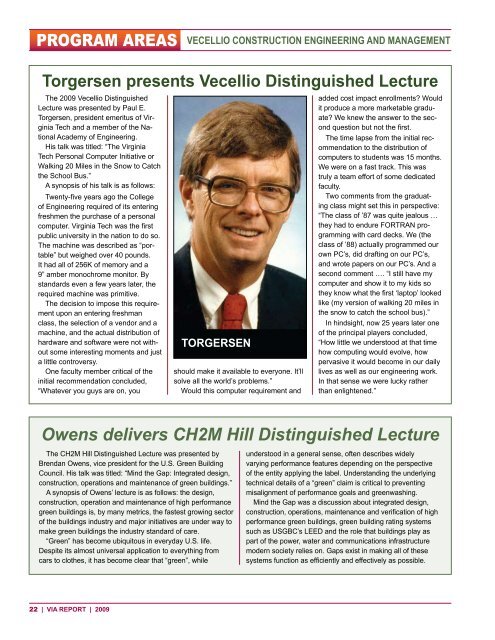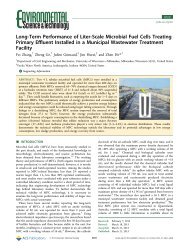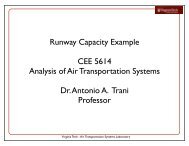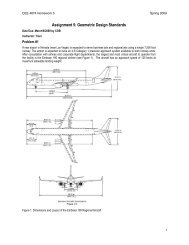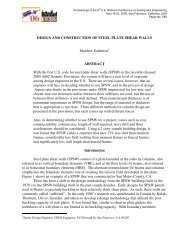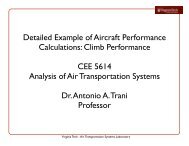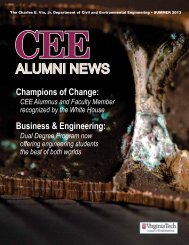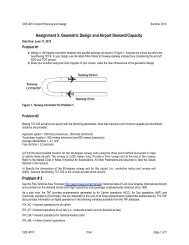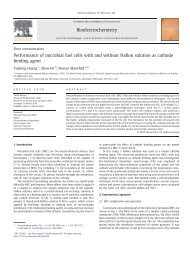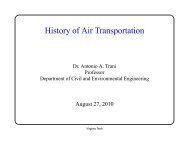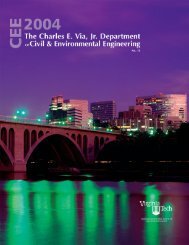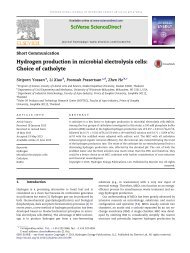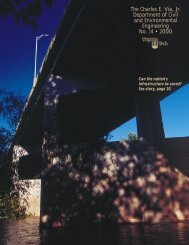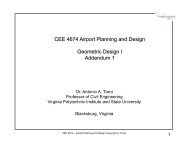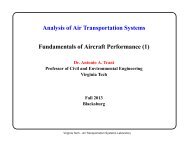Annual Report Year 2009 - Civil and Environmental Engineering
Annual Report Year 2009 - Civil and Environmental Engineering
Annual Report Year 2009 - Civil and Environmental Engineering
- No tags were found...
Create successful ePaper yourself
Turn your PDF publications into a flip-book with our unique Google optimized e-Paper software.
PROGRAM AREAS<br />
VECELLIO CONSTRUCTION ENGINEERING AND MANAGEMENT<br />
Torgersen presents Vecellio Distinguished Lecture<br />
The <strong>2009</strong> Vecellio Distinguished<br />
Lecture was presented by Paul E.<br />
Torgersen, president emeritus of Virginia<br />
Tech <strong>and</strong> a member of the National<br />
Academy of <strong>Engineering</strong>.<br />
His talk was titled: “The Virginia<br />
Tech Personal Computer Initiative or<br />
Walking 20 Miles in the Snow to Catch<br />
the School Bus.”<br />
A synopsis of his talk is as follows:<br />
Twenty-five years ago the College<br />
of <strong>Engineering</strong> required of its entering<br />
freshmen the purchase of a personal<br />
computer. Virginia Tech was the first<br />
public university in the nation to do so.<br />
The machine was described as “portable”<br />
but weighed over 40 pounds.<br />
It had all of 256K of memory <strong>and</strong> a<br />
9” amber monochrome monitor. By<br />
st<strong>and</strong>ards even a few years later, the<br />
required machine was primitive.<br />
The decision to impose this requirement<br />
upon an entering freshman<br />
class, the selection of a vendor <strong>and</strong> a<br />
machine, <strong>and</strong> the actual distribution of<br />
hardware <strong>and</strong> software were not without<br />
some interesting moments <strong>and</strong> just<br />
a little controversy.<br />
One faculty member critical of the<br />
initial recommendation concluded,<br />
“Whatever you guys are on, you<br />
TORGERSEN<br />
should make it available to everyone. It’ll<br />
solve all the world’s problems.”<br />
Would this computer requirement <strong>and</strong><br />
added cost impact enrollments Would<br />
it produce a more marketable graduate<br />
We knew the answer to the second<br />
question but not the first.<br />
The time lapse from the initial recommendation<br />
to the distribution of<br />
computers to students was 15 months.<br />
We were on a fast track. This was<br />
truly a team effort of some dedicated<br />
faculty.<br />
Two comments from the graduating<br />
class might set this in perspective:<br />
“The class of ’87 was quite jealous …<br />
they had to endure FORTRAN programming<br />
with card decks. We (the<br />
class of ’88) actually programmed our<br />
own PC’s, did drafting on our PC’s,<br />
<strong>and</strong> wrote papers on our PC’s. And a<br />
second comment …. “I still have my<br />
computer <strong>and</strong> show it to my kids so<br />
they know what the first ‘laptop’ looked<br />
like (my version of walking 20 miles in<br />
the snow to catch the school bus).”<br />
In hindsight, now 25 years later one<br />
of the principal players concluded,<br />
“How little we understood at that time<br />
how computing would evolve, how<br />
pervasive it would become in our daily<br />
lives as well as our engineering work.<br />
In that sense we were lucky rather<br />
than enlightened.”<br />
Owens delivers CH2M Hill Distinguished Lecture<br />
The CH2M Hill Distinguished Lecture was presented by<br />
Brendan Owens, vice president for the U.S. Green Building<br />
Council. His talk was titled: “Mind the Gap: Integrated design,<br />
construction, operations <strong>and</strong> maintenance of green buildings.”<br />
A synopsis of Owens’ lecture is as follows: the design,<br />
construction, operation <strong>and</strong> maintenance of high performance<br />
green buildings is, by many metrics, the fastest growing sector<br />
of the buildings industry <strong>and</strong> major initiatives are under way to<br />
make green buildings the industry st<strong>and</strong>ard of care.<br />
“Green” has become ubiquitous in everyday U.S. life.<br />
Despite its almost universal application to everything from<br />
cars to clothes, it has become clear that “green”, while<br />
understood in a general sense, often describes widely<br />
varying performance features depending on the perspective<br />
of the entity applying the label. Underst<strong>and</strong>ing the underlying<br />
technical details of a “green” claim is critical to preventing<br />
misalignment of performance goals <strong>and</strong> greenwashing.<br />
Mind the Gap was a discussion about integrated design,<br />
construction, operations, maintenance <strong>and</strong> verification of high<br />
performance green buildings, green building rating systems<br />
such as USGBC’s LEED <strong>and</strong> the role that buildings play as<br />
part of the power, water <strong>and</strong> communications infrastructure<br />
modern society relies on. Gaps exist in making all of these<br />
systems function as efficiently <strong>and</strong> effectively as possible.<br />
22 | VIA REPORT | <strong>2009</strong>


